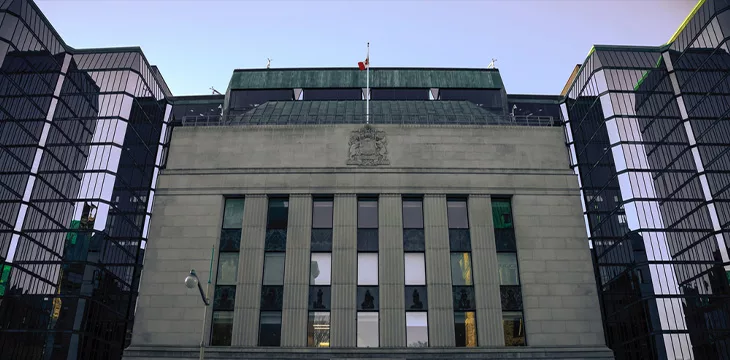|
Getting your Trinity Audio player ready...
|
As global banking regulators scramble to roll out their versions of central bank digital currencies (CBDCs), a new report from the Bank of Canada suggests that residents have little reason to adopt the offering.
The staff discussion paper noted that most Canadians have access to a wide range of payment alternatives, making the prospects of mass CBDC adoption grim. Per the report, the average Canadian consumer can access credit and debit cards, mobile and digital wallets as the use of cash continues to decline.
The central bank utilized a hypothetical situation of a cashless society to predict the behavior of Canadians toward CBDC. According to the report, the absence of cash from the existing payment environment could adversely affect a fraction of the general population—the cash-dependent and the technology-averse.
Both cohorts make up less than 10% of the general population, with the report noting that CBDC could help meet their payment needs in a cashless economy. However, the diversity of payment alternatives could hinder the mass adoption of CBDC, leading to a decline in merchants accepting them from consumers.
“Most importantly, however, the consumers who would have gaps in meeting their payment needs are a small share of the market,” read the report. “Therefore, even if they were to adopt and use CBDCs early in the process, it would probably be insufficient to encourage widespread merchant acceptance.”
Despite the challenge of low acceptance, the Bank of Canada theorizes that the CBDC in a cashless economy would possess key characteristics, including universal accessibility. The banking regulator said that the CBDC would offer privacy, “limited incremental cost at the point of transaction,” and would be non-interest bearing.
Given the downsides, the staff discussion paper proposed several alternatives to CBDC in a cashless economy. At the top of the list is the need to improve internet access in rural areas in Canada, exploring popularizing low-cost bank options and encouraging collaboration with retailers and payment service providers.
In its concluding section, the Bank of Canada pledged to continue sustaining the use of banknotes in the country but remains aware that consumer behavior may lead to a steep decline in cash usage.
Taking the initiative
Given the global interest in the offering, the Bank of Canada has been exploring the prospects of launching retail CBDC. In May, the banking regulator unveiled a public consultation despite stating that the country does not have a pressing need for a CBDC.
Its experiments into CBDC has led the central bank to begin preliminary studies on the application of offline CBDC payments to increase adoption. The central bank stated in the paper that an offline CBDC is “more resilient than other electronic methods of payment” but noted several drawbacks for real-world use.
To learn more about central bank digital currencies and some of the design decisions that need to be considered when creating and launching it, read nChain’s CBDC playbook.
Watch: CBDCs and BSV

 12-15-2025
12-15-2025 





